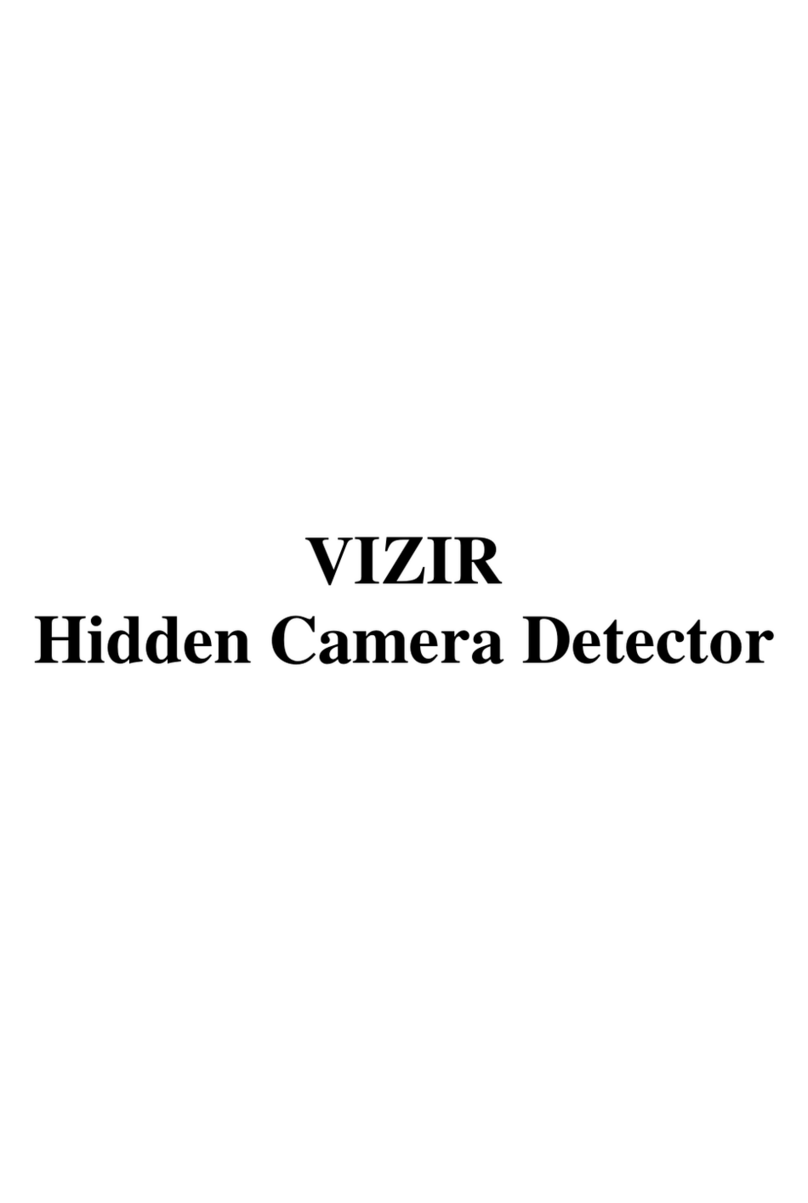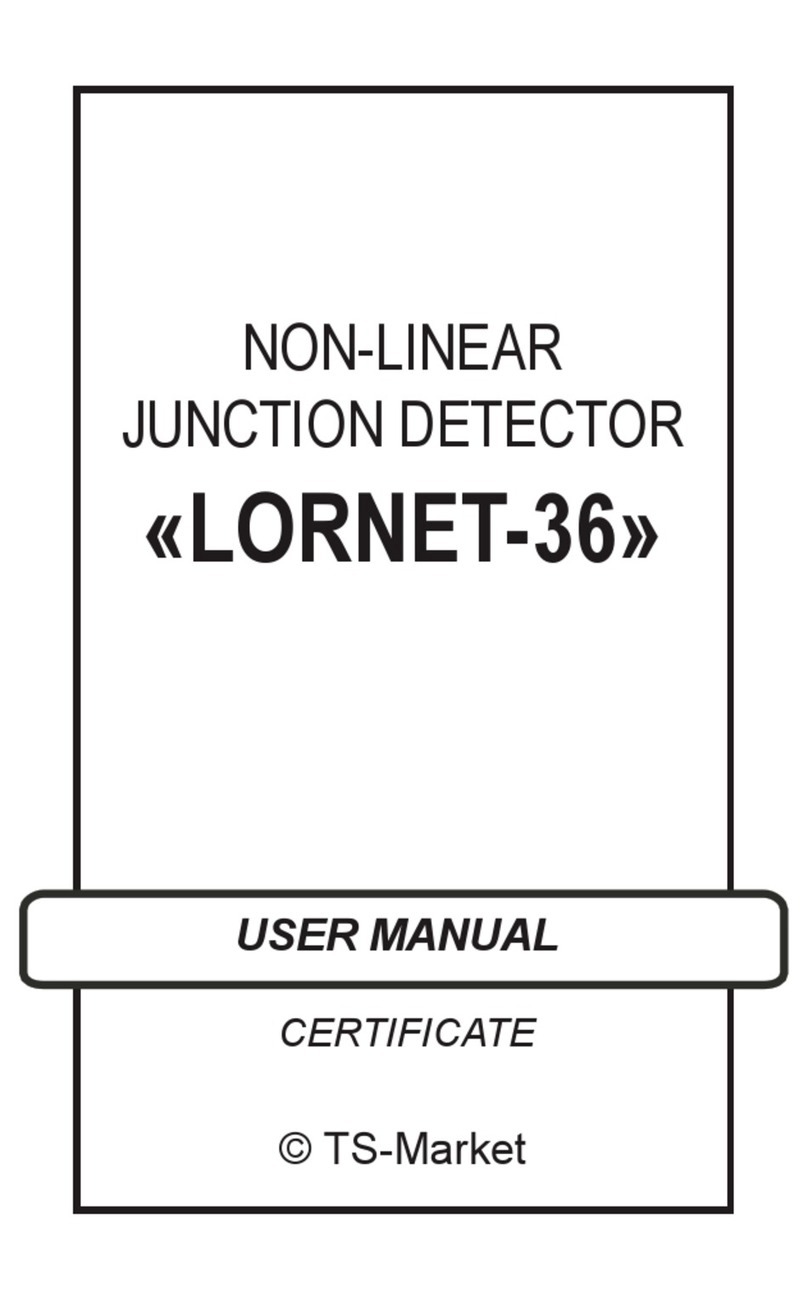
8
4. Purpose of the Detector Basic Units
4.1. The transceiver antenna with built-in LED
indicators is used for:
•Analysis of distortion and interference in the
instrument receiving path, which is made
each time the detector transmitter is switched
on. Therefore, if an interfering signal appears
during operation (in a complicated electromag-
netic environment) it is necessary to turn the
detector transmitter off and on from time to
time thus selecting an optimal frequency auto-
matically, which will provide the best sensitivity
as well as detection range of semiconductor
components.
•Generation of microwave probing signal, re-
ception and digital processing of the 2nd and
the 3rd frequency harmonics. Simultaneous
display of the 2nd and the 3rd harmonics
levels gives the opportunity to distinguish with
a high reliability between signals of articial
semiconductors integrated in electronic de-
vices and natural corrosive ones which may
appear at oxidized junction points of various
metals.






























